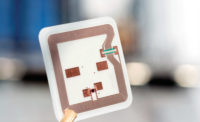

Super fusion enhancement allows law
enforcement to take raw security video
and bring out more details quickly.
During my visits with chief security officers at numerous college, industrial, healthcare, retail and transportation firms, I have always been impressed with the close relationship private security has with local law enforcement.
Many private security officers and security executives come from law enforcement. Everyone, however, understands the job, the courage and the dangers that police face. More than 14,859 law enforcement officers have been killed in the line of duty. Over 6,000 officers have been killed since 1960. There are approximately 740,000 sworn law enforcement officers now serving in the U.S.
These days, local police also are pioneers for unique, effective technologies that came from private security or one day will migrate to private security. Some of the new tech generates from homeland security and Department of Justice grants.

Law enforcement now has self-contained,
portable video processing
labs to improve the quality of live
and pre-recorded security video.
Look for such solutions to bleed into
certain private security operations.
One example: intelligent cameras on police vehicles.
Automated license plate recognition (ALPR) technology is now being embedded in a new portable camera mount option for law enforcement vehicles. From PIPS, the portable mount allows for easy and rapid deployment of an ALPR system to any vehicle, and enables agencies to operate in covert operations using unmarked vehicles. Compared to a traditional (fixed) lightbar mount, the new portable mount is used to secure the dual channel ALPR camera to the vehicle window. A ruggedized laptop, or existing mobile data terminal, inside the vehicle performs the optical character recognition and database matching via the PAGIS software interface.Police Pioneers
The field of forensics also is quickly becoming instrumental for law enforcement and justice officials in helping either to prove or disprove circumstances through the use of technology, thereby making it a critical step in expediting the legal process. More sophisticated evidence is being required in courts by science-savvy juries. At the same time, local agencies are faced with minimal budgets to provide hi-tech presentations to prove their cases.To provide a solution, I discovered that Pyramid Vision, a wholly owned subsidiary of the Sarnoff Corporation, has developed a service called Sarensix. Investigators can take raw video surveillance footage and process it faster and more accurately through the implementation of what’s called super fusion enhancement. This technique aligns and processes multiple frames of video as a complete segment. Such video forensic services accept most recorded formats and mediums, even poor quality video made by amateurs, and provides usable information.
The service is built upon the VideoDetective, a self-contained, portable video processing lab that improves the quality of live or pre-recorded video images. Designed to operate either on scene or in a crime lab, this workstation employs cutting-edge computer vision techniques to transform shaky, blurry, obscure images into sharper, clearer video. The resulting enhanced images, either still or video, can even be distributed via e-mail, along with chain of custody detail, to facilitate collaborative endeavors.
There’s no doubt that private security and law enforcement are working more closely; today there also are many emerging technologies being implemented by the police which will also see favor on the private side.





